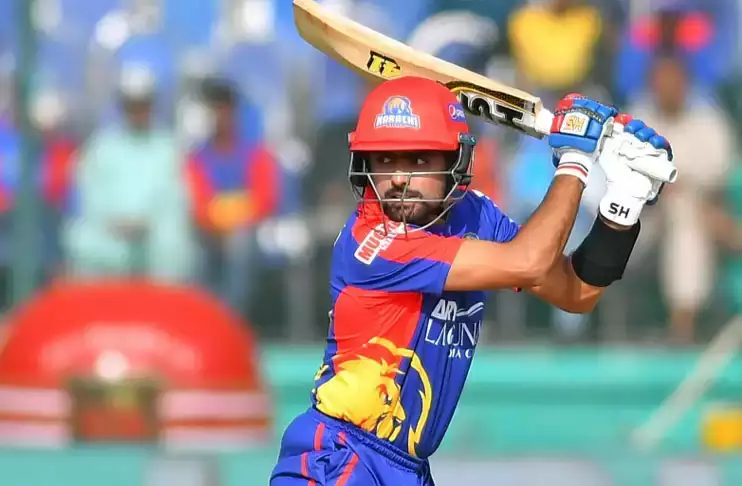Fantasy cricket isn’t just about picking your favourite players; it’s a strategic game that demands keen analysis and calculated decision-making. To consistently win in fantasy cricket, you must be adept at player analysis. If you’re struggling with the analysis while you play fantasy sports, this blog is for you. In this comprehensive guide, we will delve into the intricacies of player analysis, helping you make informed choices and boost your chances of victory.
I. Player Performance Metrics
Understanding the key performance metrics is the foundation of player analysis in fantasy cricket. Here are some crucial statistics to consider:
1. Batting Average: A player’s batting average reflects their consistency in scoring runs. Look for batsmen with a high average, especially in the format you are playing (Test, ODI, or T20).
2. Strike Rate: In shorter formats like T20, a high strike rate is vital. It indicates a player’s ability to score quickly.
3. Bowling Average: For bowlers, the bowling average measures their effectiveness in taking wickets while minimising runs conceded.
4. Economy Rate: In limited-overs cricket (ODI and T20), a low economy rate is essential for bowlers. It signifies their ability to control the flow of runs.
5. Recent Form: Pay close attention to a player’s recent performances. Players in good form are more likely to continue performing well.
II. Venue and Pitch Analysis
The pitch and conditions at the venue play a significant role in player performance. Here’s what to consider:
1. Pitch Type: Assess whether the pitch is batting-friendly or favours bowlers. Some pitches may have a history of high scores, while others might assist the bowlers.
2. Weather Conditions: Weather can impact the game. Rain interruptions can affect the outcome of the match, and overcast conditions can assist swing bowlers.
3. Home Advantage: Players often perform better on their home ground due to familiarity with the conditions. Take note of such advantages.
III. Player Form and Consistency
Player form can be transient, so it’s crucial to analyze a player’s consistency over time:
1. Recent Matches: Evaluate a player’s performance in the last few matches. Consistency is key, so look for players who consistently contribute with bat or ball.
2. Historical Data: Review a player’s career statistics to identify trends in their performance. Have they consistently performed well in a specific format or against certain teams?
IV. Player Role and Position
A player’s role in the team and their batting or bowling position can significantly impact their fantasy cricket performance:
1. Top-Order Batsmen: Openers and top-order batsmen generally have more opportunities to score runs. They should be a priority in your team selection.
2. All-Rounders: All-rounders who contribute both with bat and ball are valuable assets. They provide opportunities for points in multiple categories.
3. Specialist Bowlers: Specialist bowlers who regularly take wickets are essential for accumulating fantasy points. Look for consistent wicket-takers.
V. Team Composition
Assessing the overall team composition is crucial:
1. Team Balance: A balanced team with a mix of batsmen, bowlers, and all-rounders is essential. Overloading on one type of player can be risky.
2. Captain and Vice-Captain: The choice of captain and vice-captain is critical, as they earn double and 1.5 times the points, respectively. Select players who are in good form and have favourable fixtures.
VI. Injuries and Team News
Keep an eye on team news and player availability:
1. Injuries: Injured players may not perform at their best or may not play at all. Avoid selecting players with recent injuries or doubts over their fitness.
2. Squad Changes: Teams may make last-minute changes to their playing XI. Stay updated with the final squad to make necessary adjustments.
VII. Opponent Analysis
Understanding the strengths and weaknesses of the opponent team can be beneficial:
1. Bowling Attack: Consider the quality of the opponent’s bowling attack. Batsmen might find it challenging to score against top-class bowlers.
2. Previous Encounters: Review past matches between the teams and how specific players have performed against each other.
VIII. Differential Picks and Contrarian Strategies
To gain an edge over your competition, consider differential picks:
1. Contrarian Strategy: While it’s essential to select top-performing players, sometimes picking lesser-known players or those who are undervalued can provide an advantage.
2. Fixture Analysis: Assess the upcoming fixtures and target players who have favourable matchups. Look for teams with weak bowling or batting line-ups to exploit.
IX. Adaptability and Flexibility
Flexibility is key in fantasy cricket. Be prepared to make changes to your team based on the evolving circumstances:
1. Mid-Match Adjustments: In some formats, you can make substitutions during a match. Use this feature wisely to maximize your points.
2. Transfers and Captains: Utilize the transfer options available in your fantasy league. Consider changing your captain based on form and fixture.
X. Player Availability
Keep track of player availability due to international commitments or personal reasons. Players involved in multiple tournaments might miss some matches.
Conclusion
Player analysis in fantasy cricket is a dynamic and skilful endeavour. To consistently succeed in fantasy cricket, especially in the upcoming Cricket World Cup, you must focus on all the points mentioned above.












